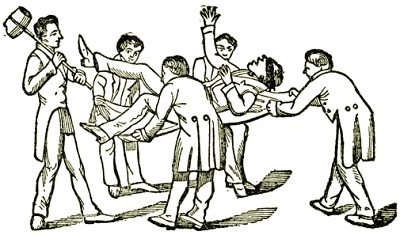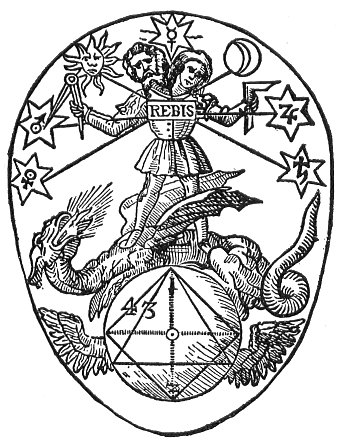Are We Morally Responsible for the Advice We Give – Manly P Hall
Intermediary Class: The Scotch Knight | Chapter 8
p. 460
Sixth Part of the Code of the Illuminees.
Under the appellation of Intermediary Class of Illuminism might be comprehended all the Degrees which Weishaupt had borrowed from Freemasonry. In that case we should comprize under this denomination the three degrees of Apprentice, Fellow-Craft, and Master. But it has been already said, that these degrees are simply a passport for the Sect into the Masonic Lodges; and that its object may be less conspicuous, it leaves them in their original Masonic state. This, however, is not the case with the higher degrees of Scotch Masonry. The Sect shrewdly surmised that the views of these degrees coincided with their own: beside, it wanted some of these superior degrees, either for the direction of those Masonic Lodges which it composed of its own members, or who were to gain admittance, dominate, and preside over other Lodges which were not devoted to Illuminism. The great veneration in which the Scotch Knights are generally held by Masons, more strongly determined the Baron Knigge to make himself master of this degree, and engraft it on Illuminism. The Sect has constituted this into both an intermediary and a stationary degree. It is stationary for those into whom it despairs of ever infusing the principles required for a further admission to the mysteries; but it is only intermediary for those who have shown dispositions more accordant with the pursuits of the Sect. 1
Whatever may be his destiny, no Brother is ever admitted into this new degree, until he has previously given proofs of the progress he has made in the arts of Scrutator, whose code must have been his chief study since his admission to the degree of Major Illuminee. The secret Chapter of the Knights has had the precaution to propose certain questions to him to ascertain how far he is capable of judging of the state of the mind by exterior appearances. He will have had to answer, for example, to the following ones:—”What is the character of a man whose eyes are perpetually in motion, and whose countenance is changeable? What features denote voluptuousness, melancholy, and pusillanimity?” 2
As a further proof of the progress he has made, he is to transmit to his superiors another dissertation on the life of the hero whose name he bears for
p. 461
his characteristic. The history of his own life, which he had delivered in the antecedent degree, had laid open the whole of his existence, and all his actions through life. This new dissertation will show the Order what he admires or disapproves of in others, and will particularly demonstrate whether he has discovered those qualities in his patron which the Order wished he should imbibe and imitate when it gave him his characteristic. 3 Should any part of his life have escaped the vigilance of the Scrutators, he is still at liberty to give a new proof of his confidence in the Order; and this is described as a meritorious act; but he may reserve it for the cognizance of the Superior of the Order only. 4 He is then to declare under his hand-writing, that he looks upon the Superiors of Illuminism as the secret and unknown though legitimate Superiors of Freemasonry; that he adheres and always will adhere to the illuminized system of Masonry, as the best and most useful existing; that he utterly renounces every other association; that he is, in short, so persuaded of the excellence of Illuminism, that he fully adopts its principles, and firmly believes himself bound to labour, under the direction of his superiors, at the object and according to the intentions of the Order for the happiness of mankind. 5
After having received these numerous pledges, the Scotch Knights invite the new Brother to a secret Chapter, for such is the name given to the Lodges of this degree. It is hung with green, richly decorated and brilliantly lighted. The Prefect of the Knights, booted and spurred, is seated on a throne erected under a canopy all of the same colour. On his apron a green cross is seen, and on his breast the star of the Order; he wears the riband of St. Andrew in salter from right to left, and holds a mallet in his hand. On his right stands the brother sword-bearer, holding the sword of the Order; on his left the master of the ceremonies with a stick in one hand, and the ritual in the other. The Knights assembled are all booted and spurred, each girt with a sword, and all wear the cross suspended at their necks by a green riband. The Officers of the Order are to be distinguished by a plumage, and a priest of the Order compleats the Lodge. The Prefect then delivers himself as follows to the Candidate:

Moe is the founder of GnosticWarrior.com. He is a father, husband, author, martial arts black belt, and an expert in Gnosticism, the occult, and esotericism.
Title Page
Illustrations of Masonry
by William Morgan
[1827]
This book has a controversial backstory which is part of the mythology of anti-Freemasonry. ‘Captain’ William Morgan, the author, was a disappointed Freemason in Batavia, New York. Rejected by the local lodge, he announced that he was going to publish a work exposing Masonic rituals and secrets. Shortly before publication in 1826, he disappeared, and three Masons were later convicted of kidnapping him. Although claims were made that Morgan had been murdered, some say that he was forced to leave the US. Either way, it was good publicity for this book, which was published in 1827, but bad for the Masons. The incident led to widespread protests against Freemasons in the US, and eventually an anti-Masonic Party, which at its height in 1832 got seven electoral votes for William Wirt for President.
So why read this book? Stripped of the fevered historical background, and ignoring the publisher’s antimasonic introduction, this becomes simply one of the first published accounts of US Freemasonry in the early 19th century. It seems accurate, based on other published Monitors, such as Ducan’s. At this perspective, Illustrations is no more offensive than Robert’s Rules of Order, although it makes more interesting reading.
Production Notes: I have, as is the usual practice, silently cleaned up egregious punctuation errors in the text, particularly quotation marks. There were no obvious chapter breaks, so I have inserted file breaks at logical boundaries in the text. As usual, any text in small green type was added to the text by the transcriber.–J. B. Hare.
Illustrations of Masonry
First Section of the Lecture on the First Degree
Second Section of the Lecture on the First Degree
Third Section of the Lecture on the First Degree
Second or Fellow Craft Degree Initiation
First Section of the Fellow Craft Mason Lecture
Second Section of the Fellow Craft Mason Lecture
Third, or Master Mason’s Degree
First Section of the Master Mason Lecture
Second Section of the Master Mason Lecture 1
Second Section of the Master Mason Lecture 2
Freemasonry at a Glance

Moe is the founder of GnosticWarrior.com. He is a father, husband, author, martial arts black belt, and an expert in Gnosticism, the occult, and esotericism.
Sublime Prince of the Royal Secret | Chapter 32
p. 839
[Master of Royal Secret.]
THE Occult Science of the Ancient Magi was concealed under the shadows of the Ancient Mysteries: it was imperfectly revealed or rather disfigured by the Gnostics: it is guessed at under the obscurities that cover the pretended crimes of the Templars; and it is found enveloped in enigmas that seem impenetrable, in the Rites of the Highest Masonry.
Magism was the Science of Abraham and Orpheus, of Confucius and Zoroaster. It was the dogmas of this Science that were engraven on the tables of stone by Hanoch and Trismegistus. Moses purified and re-veiled them, for that is the meaning of the word reveal. He covered them with a new veil, when he made of the Holy Kabalah the exclusive heritage of the people of Israel,
p. 840
and the inviolable Secret of its priests. The Mysteries of Thebes and Eleusis preserved among the nations some symbols of it, al-ready altered, and the mysterious key whereof was lost among the instruments of an ever-growing superstition. Jerusalem, the murderess of her prophets, and so often prostituted to the false gods of the Syrians and Babylonians, had at length in its turn lost the Holy Word, when a Prophet announced to the Magi by the consecrated Star of Initiation, came to rend asunder the worn veil of the old Temple, in order to give the Church a new tissue of legends and symbols, that still and ever conceals from the Profane, and ever preserves to the Elect the same truths.
It was the remembrance of this scientific and religious Absolute, of this doctrine that is summed up in a word, of this Word, in fine, alternately lost and found again, that was transmitted to the Elect of all the Ancient Initiations: it was this same remembrance, preserved, or perhaps profaned in the celebrated Order of the Templars, that became for all the secret associations, of the Rose-Croix, of the Illuminati, and of the Hermetic Freemasons, the reason of their strange rites, of their signs more or less conventional, and, above all, of their mutual devotedness and of their power.
The Gnostics caused the Gnosis to be proscribed by the Christians, and the official Sanctuary was closed against the high initiation. Thus the Hierarchy of Knowledge was compromitted by the violences of usurping ignorance, and the disorders of the Sanctuary are reproduced in the State; for always, willingly or unwillingly, the King is sustained by the Priest, and it is from the eternal Sanctuary of the Divine instruction that the Powers of the Earth, to insure themselves durability, must receive their consecration and their force.
The Hermetic Science of the early Christian ages, cultivated also by Geber, Alfarabius, and others of the Arabs, studied by the Chiefs of the Templars, and embodied in certain symbols of the higher Degrees of Freemasonry, may be accurately defined as the Kabalah in active realization, or the Magic of Works. It has three analogous Degrees, religious, philosophical, and physical realization.
Its religious realization is the durable foundation of the true Empire and the true Priesthood that rule in the realm of human intellect: its philosophical realization is the establishment of an absolute Doctrine, known in all times as the “HOLY Doctrine,”
p. 841
and of which PLUTARCH, in the Treatise “de Iside et Osiride,” speaks at large but mysteriously; and of a Hierarchical instruction to secure the uninterrupted succession of Adepts among the Initiates: its physical realization is the discovery and application, in the Microcosm, or Little World, of the creative law that incessantly peoples the great Universe.
Measure a corner of the Creation, and multiply that space in proportional progression, and the entire Infinite will multiply its circles filled with universes, which will pass in proportional segments between the ideal and elongating branches of your Compass. Now suppose that from any point whatever of the Infinite above you a hand holds another Compass or a Square, the lines of the Celestial triangle will necessarily meet those of the Compass of Science, to form the Mysterious Star of Solomon.

Moe is the founder of GnosticWarrior.com. He is a father, husband, author, martial arts black belt, and an expert in Gnosticism, the occult, and esotericism.


